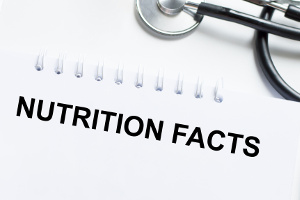Can you activate and utilize your vitamins and Q10?
 Several B-vitamins need to be converted into other forms before they are activated for a wide range of functions. However, enzyme defects, alcohol, medication, and aging processes can make this difficult. The form of vitamin D that we produce from the sun or get from supplements is also inactive, and factors like obesity, aging processes, and a lack of certain minerals can make it difficult to make the active form. Conversion of vitamin K1 into vitamin K2 requires a well-functioning gut flora. Optimal utilization of Q10 requires a specific selenium compound. This means that an inability to activate vitamins and Q10 can result in chronic fatigue, many serious diseases, and in the worst case, early death.
Several B-vitamins need to be converted into other forms before they are activated for a wide range of functions. However, enzyme defects, alcohol, medication, and aging processes can make this difficult. The form of vitamin D that we produce from the sun or get from supplements is also inactive, and factors like obesity, aging processes, and a lack of certain minerals can make it difficult to make the active form. Conversion of vitamin K1 into vitamin K2 requires a well-functioning gut flora. Optimal utilization of Q10 requires a specific selenium compound. This means that an inability to activate vitamins and Q10 can result in chronic fatigue, many serious diseases, and in the worst case, early death.
It is important to be able to utilize nutrients from your diet and from supplements optimally. Firstly, this requires sufficient stomach acid and good absorption so that the nutrients can enter the bloodstream and reach the cells. Secondly, it is important that the nutrients appear in biologically active forms. This often requires special enzyme processes and other metabolic processes, as outlined below:
Several B vitamins need to be methylated
Methylation is a complex chemical process within cell physiology, where a methyl group (CH3-) is inserted into another molecule. Methylation of DNA and RNA molecules is important for the activation of genes and proteins. Methylation is also essential for the activation of several B-vitamins. Vitamin B6, also called pyridoxine, is converted via methylation to the active form pyridoxal 5-phosphate (P-5-P), which can be measured in the blood. Several foods contain vitamin B9 in the form of folate, and many supplements contain folic acid, the synthetic form. Both folate and folic acid need to be activated before the cells can use the vitamin, and this requires the enzyme MTHFR (methylene tetrahydrofolate reductase), which converts the forms into methylfolate. Vitamin B12, also known as cobalamin, is most commonly found in the diet as hydroxycobalamin, and the most common form in supplements is cyanocobalamin, which is more stable. The body normally converts these forms into methylcobalamin (found in tissues) and 5'deoxyadenosylcobalamin (stored in the liver). Genetic factors, including a deficiency of the MTHFR enzyme, can impair the methylation of B-vitamins. The same goes for aging processes, smoking, alcohol abuse, liver damage, and many medications. Deficiency in these B-vitamins because of unhealthy diet and poor utilization can result in various symptoms and diseases such as fatigue, anemia, neurological disorders, infections, and hair loss. During pregnancy, a deficiency in B9 can lead to neural tube defects and miscarriage. Vitamins B6, B9, and B12 also play a role in the conversion of the amino acid homocysteine. If homocysteine levels become too high, the risk of cardiovascular diseases, blood clots, strokes, inflammation, and dementia, such as Alzheimer's, increases. A poor ability to methylate B-vitamins automatically leads to an increased need for the vitamins. With regard to supplements, you can also choose methylated active forms, which the body can more easily utilize. Additionally, vitamin B12 supplements with methylcobalamin in lozenge form allow for high absorption through the mucous membranes in the mouth.
Vitamin B3 (niacin) needs to be activated to NAD and NADH
Niacin is a general term for the forms nicotinic acid and nicotinamide found in food and supplements. Niacin is important for cellular energy metabolism, which takes place in the mitochondria. Here, a series of biochemical processes occur, where niacin is converted through various steps into the active form NAD (nicotinamide adenine dinucleotide). NAD specifically switches between two oxidation states (NAD+ and NADH), which are crucial in order for cells to form ATP, which is energy stored in its chemical form. NAD is also involved in several hundred biochemical processes. Niacin is found in protein-rich foods such as meat, fish, eggs, and whole grains. In addition, the body can produce niacin from B6 and the amino acid tryptophan. Utilization of B3 plays a crucial role in energy utilization, the nervous system, and general health. According to some researchers, niacin deficiency can also be caused by genetic defects, making it difficult to utilize the active NAD form properly. Therefore, these individuals have a much greater need for B3 than others. The niacin form nicotinic acid, which enters the bloodstream faster, typically has a better therapeutic effect than nicotinamide. However, in larger amounts, nicotinic acid can cause a harmless reaction known as the "niacin flush" that is characterized by redness and warmth in the face. It quickly subsides. It is therefore recommended to start with small doses of nicotinic acid and gradually increase to higher therapeutic doses, distributed throughout the day. You can also buy combined B3 supplements as NAD boosters with higher doses of nicotinamide and nicotinic acid, where the nicotinic acid is released slowly. In some countries, you can also buy NADH supplements, which may be easier to utilize.
Vitamin D functions as a steroid hormone in its active form
Vitamin D is a fat-soluble vitamin found in various forms. When UVB radiation from the sun reacts with cholesterol precursor in the skin, we synthesize D3 vitamin in the form of cholecalciferol. This is also the of vitamin D found in animal foods like fatty fish, liver, and eggs, as well as in supplements. We also need to convert cholecalciferol as this form is inactive, and the process takes place in two steps. First, cholecalciferol is converted in the liver to the form calcidiol, which is measured in the blood as 25-hydroxyvitamin D3. When vitamin D is needed for various functions, it is converted in the kidneys, white blood cells, and other cells into the active steroid form calcitriol (1,25-dihydroxyvitamin D3). It is thus calcitriol that binds to vitamin D receptors in most of the body's cells. The conversion of vitamin D takes place via enzyme functions that require magnesium. Zinc is also needed when the active steroid form binds to the cell receptors. This means that you cannot utilize vitamin D from the sun or diet if you lack these minerals. Genetic factors, dark skin, aging processes, obesity, diabetes, as well as liver and kidney diseases, can also make it difficult to form or activate the vitamin, which automatically increases your need for it. Vitamin D deficiency can increase the risk of fatigue, infections, autoimmune diseases, cardiovascular diseases, muscle weakness, osteoporosis, diabetes, and cancer.
The role of K1 and K2 vitamins in coagulation, circulation, and bones
Vitamin K1 (phylloquinone) is important for blood clotting and is primarily found in dark green vegetables like cabbage, spinach, parsley, and beans.
Vitamin K2 is mainly found in fermented products like butter, cheese, and sauerkraut, where it is produced by bacteria. K2 is also present in egg yolks and fatty cuts from ruminants. Bacteria in a healthy gut flora can also convert K1 to K2, but the amounts are often limited. Vitamin K2 (menaquinone) is crucial for the formation of a protein called Matrix Gla protein (MGP) that removes calcium from the bloodstream and another protein (osteocalcin) that helps deposit calcium in the bones. Vitamins K2 and D also have a synergistic effect in regulating the body's calcium distribution. Vitamin K1 and K2 deficiency is primarily caused by a poor diet and an unhealthy gut flora. Deficiencies in vitamin D, magnesium, and zinc, as well as various intestinal diseases, can also impair absorption and utilization. Different types of medication (Marevan, PPI, antibiotics) can also hinder the absorption and utilization of K vitamins. K2 deficiency can lead to an increased risk of arteriosclerosis and osteoporosis. There is also an increased risk of inflammation and severe cases of COVID-19.
Q10 for energy and cell defense
Q10 is a coenzyme that exists in two forms. Ubiquinone is particularly important for the cells' energy metabolism, which takes place inside the mitochondria. The other form, ubiquinol, acts as a powerful antioxidant, protecting cells and cholesterol from oxidative stress caused by free radicals. There is also a need for a selenium-containing enzyme, TXNRD, which ensures that Q10 can switch between the two forms as needed. The body’s production of Q10 gradually declines after the age of 20. By the age of 80, the heart's Q10 content is about half. Medications like cholesterol-lowering statins and alendronate for osteoporosis can also inhibit the body’s Q10 synthesis. The problem is exacerbated by the fact that the soil in Denmark and the rest of Europe is low in selenium, which is reflected throughout the food chain. However, supplements of selenium yeast and high-quality Q10 seem to have a positive effect on energy metabolism, the heart, circulation, metabolic hormones, cancer prevention, quality of life, and lifespan. This was supported by a controlled study that is published in BMC Medicine.
References:
Heather Yoshimura Ang-pc. The Role of B Vitamins in Methylation Process: Clinical Applications. RUPA HEALTH 2024
Andrius Bleizgys. Zinc, Magnesium and Vitamin K Supplementation in Vitamin D Deficiency: Pathophysiological Background and Implications for Clinical Practice. Nutrients 2024
Urban Alehagen et al. Supplementation with selenium and Q10 in an elderly Swedish population low in selenium – positive effects on thyroid hormones, cardiovascular mortality, and quality of life. BMC Medicine 2024
Adrianna Budzinska et al. The bisphosphonates alendronate and zoledronate induce adaptations of aerobic metabolism in permanent human endothelial cells. Scientific Reports 2023.
Lain Hargreaves et al. Disorders of Human Coenzyme Q10 Metabolism: An Overview. International Journal of Molecular Sciences. 2020
TIP! See also the related articles
Search for more information...
- Created on .








